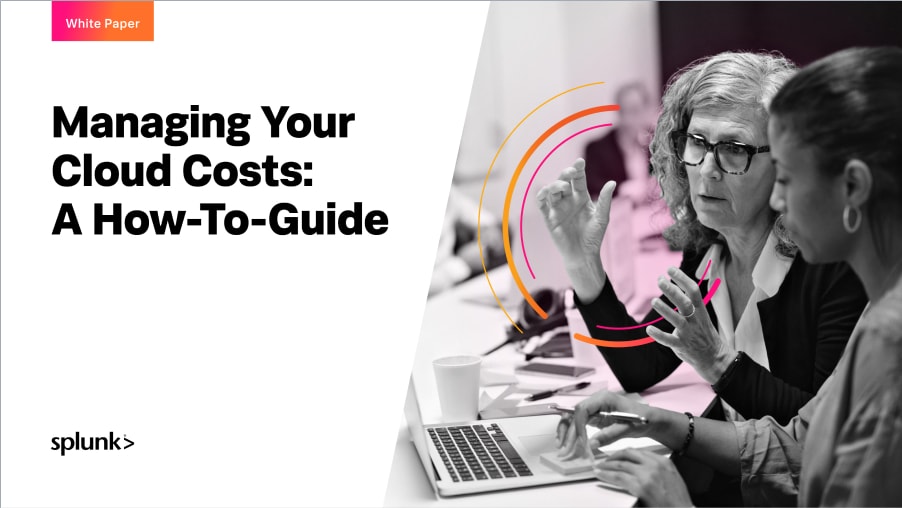Cost Management for IT Leaders

For organizations to effectively allocate their budget, prevent overspending, and plan for the future, cost management is crucial.
The responsibility to manage costs ultimately falls on leadership. If that’s you, read on to get a better grasp on why it matters and how to do it.
What is IT cost management?
Simply put: IT cost management refers to the business procedures organizations use to regulate their IT-related expenses.
The assessment, calculation, and analysis of an organization's IT expenses, such as those associated with hardware, integration, and implementation, are all part of the IT cost management process.
Benefits of IT cost management
As you might expect, there are myriad advantages to cost management, including:
Better planning: No one can predict the future, but planning for it can provide a clear roadmap and prevent headaches.
Reduction in spend: With a clear budget, organizations can avoid overspending and even reduce overall spend.
Improved visibility: Cost management tools often provide real-time analysis of spending and savings.
Stakeholder understanding and buy-in: Leadership loves being in the loop, and they’re much more likely to approve a budget if it comes with a well-defined scope and ongoing management.
3 stages of IT cost management
The cost management process is best broken into three stages: resource planning, cost estimating and budgeting, and cost control. Let’s look at each stage.
Step 1. Resource planning
This stage starts with a thorough assessment of all known IT needs. Together with your team, you will determine what resources are needed, including how much of each resource, and for how long you’ll need each resource.
There are several things to consider in this stage, including which of your expenses are capital or operational and whether you need on-premise or cloud storage.
CapEx vs OpEx
Organizations categorize their business expenses in two ways: capital expenditures (CapEx) and operational expenditures (OpEx). In the world of IT, we can say this:
CapEx includes hardware and data centers. Traditionally, software is included in CapEx as a one-time purchase, but with the cloud service delivery model, some organizations can include certain software in their OpEx instead.
OpEx includes wages and salaries, maintenance cost, utilities, and contracts — the items you pay regularly.
(Understand the many components of IT infrastructure.)
Cloud vs on-premises solutions
Regardless of your organization’s industry, you will have to make decisions around computer servers, data storage, and various software solutions. Some of this may live on-premises, and plenty could utilize the cloud. Most of the time, the cloud will cost less — but not always!
Factors that impact overall costs include:
Required hardware and software: If you opt for on-premises storage, you’ll need to invest in expensive hardware and software, including servers. Opting for cloud storage means big savings there.
Server licensing: For on-prem servers, you’ll need to purchase server licenses. In contrast, using cloud storage means your license costs are baked into your monthly price.
Maintenance and replacements: On-premises hardware and software will need maintenance every so often and replacements every few years or so. (This is not the case with cloud solutions.)
Utility costs: Keeping your servers running requires a decent amount of power — and it’s not free. In the cloud, the cost of utilities is baked into your recurring subscription costs.
(Keeping some items on-premises? You’ll need on-prem monitoring for that.)
Step 2. Cost estimating and budgeting
Setting a budget can be complex work. Estimating costs should come first. You’ll need to develop a project scope, if applicable, to guide the process. (Tip: Looking at historical spending is extremely helpful in this stage.)
When estimating costs, there are two primary types to consider: direct costs and indirect costs. Both types can be either fixed or variable.
Direct costs
Direct costs can be directly attributed to the project or IT department. Examples include:
Hardware, software, and other equipment
Direct IT labor
Indirect costs
Indirect costs are more general costs that can’t be directly attributed to IT/the project. Examples include:
Office supplies
Utilities, like electricity
Administration
Step 3. Cost control
Measuring variations between a project's actual cost performance and the initial expected cost and schedule baselines set during the budgeting process is the ongoing practice of cost control.
Throughout a project, specific control processes are used to monitor performance and expenses. In this stage, you need to continuously look into the causes of any deviations, taking appropriate corrective action as needed.
Cost management tools are highly useful for cost control, monitoring changes, and analyzing initial and ongoing expenses.
(See how Splunk Observability helps you manage costs, data and workflows.)
Challenges of IT cost management
That basic approach to managing IT costs, while simple, can help a lot. Still, as with any business process, there are challenges, too.
Under- or over-estimation: Budgeting isn’t always 100% accurate. Your team may end up spending more — or less! — than anticipated.
Inaccurate scope: If the project scope isn’t well refined, it may lead to an inaccurate budget.
Changing plans or priorities: Things change. You may need additional resources that weren’t planned for. That’s okay! Just refine the scope, update the budget, and do what you can to reduce overall spend.
Cost management can feel overwhelming, but modern businesses can’t afford to forego the process. After all, the benefits far outweigh the challenges.
See an error or have a suggestion? Please let us know by emailing splunkblogs@cisco.com.
This posting does not necessarily represent Splunk's position, strategies or opinion.
Related Articles
About Splunk
The world’s leading organizations rely on Splunk, a Cisco company, to continuously strengthen digital resilience with our unified security and observability platform, powered by industry-leading AI.
Our customers trust Splunk’s award-winning security and observability solutions to secure and improve the reliability of their complex digital environments, at any scale.




